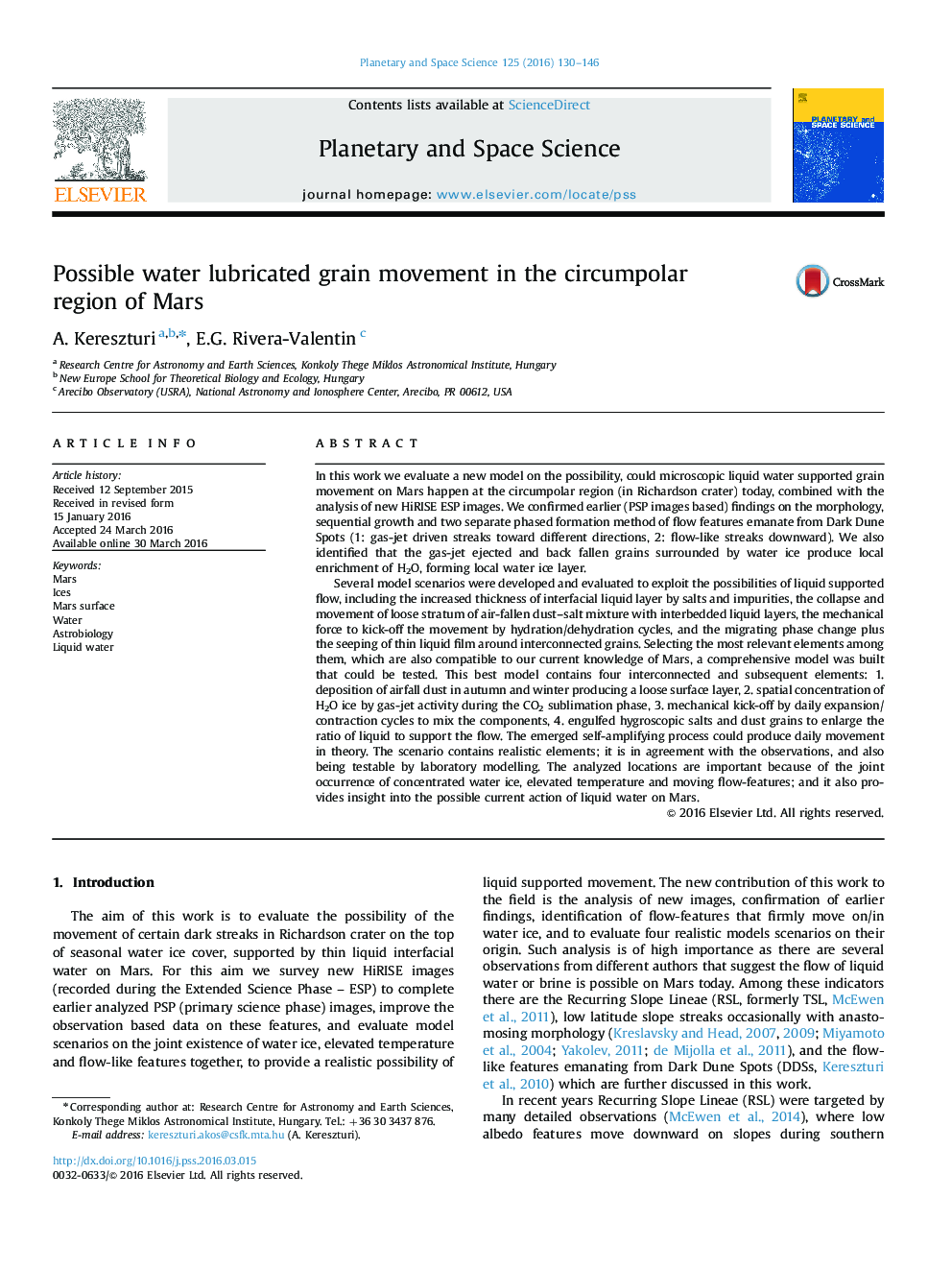| Article ID | Journal | Published Year | Pages | File Type |
|---|---|---|---|---|
| 8142752 | Planetary and Space Science | 2016 | 17 Pages |
Abstract
Several model scenarios were developed and evaluated to exploit the possibilities of liquid supported flow, including the increased thickness of interfacial liquid layer by salts and impurities, the collapse and movement of loose stratum of air-fallen dust-salt mixture with interbedded liquid layers, the mechanical force to kick-off the movement by hydration/dehydration cycles, and the migrating phase change plus the seeping of thin liquid film around interconnected grains. Selecting the most relevant elements among them, which are also compatible to our current knowledge of Mars, a comprehensive model was built that could be tested. This best model contains four interconnected and subsequent elements: 1. deposition of airfall dust in autumn and winter producing a loose surface layer, 2. spatial concentration of H2O ice by gas-jet activity during the CO2 sublimation phase, 3. mechanical kick-off by daily expansion/contraction cycles to mix the components, 4. engulfed hygroscopic salts and dust grains to enlarge the ratio of liquid to support the flow. The emerged self-amplifying process could produce daily movement in theory. The scenario contains realistic elements; it is in agreement with the observations, and also being testable by laboratory modelling. The analyzed locations are important because of the joint occurrence of concentrated water ice, elevated temperature and moving flow-features; and it also provides insight into the possible current action of liquid water on Mars.
Related Topics
Physical Sciences and Engineering
Earth and Planetary Sciences
Geophysics
Authors
A. Kereszturi, E.G. Rivera-Valentin,
